
|
Astronomy Picture Of the Day (APOD)
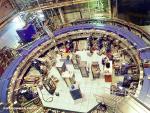 APOD: 2005 August 28 ? Muon Wobble Possible Door to Supersymmetric
Universe
APOD: 2005 August 28 ? Muon Wobble Possible Door to Supersymmetric
Universe
28.08.2005
How fast do fundamental particles wobble? A surprising answer to this seemingly inconsequential question has come out of Brookhaven National Laboratory in New York, USA and may not only indicate that the Standard Model of Particle Physics is incomplete but also that our universe is filled with a previously undetected type of fundamental particle.
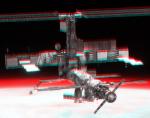 3D International Space Station
3D International Space Station
27.08.2005
Get out your red-blue glasses and float next to the International Space Station (ISS), planet Earth's largest artificial moon. This breathtaking stereo view was constructed from two separate images (S114-E-7245, S114-E-7246) recorded as the shuttle orbiter Discovery undocked from the ISS on August 6.
 Full Moon, Green Rim
Full Moon, Green Rim
26.08.2005
July's Full Moon looks strangely darkened and distorted in this remarkable telescopic view. The image is one of a series recorded when the Moon was very near the horizon. The long sight-line through...
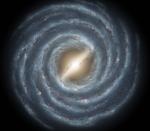 Barred Spiral Milky Way
Barred Spiral Milky Way
25.08.2005
A recent survey of stars conducted with the Spitzer Space Telescope is convincing astronomers that our Milky Way Galaxy is not just your ordinary spiral galaxy anymore. Looking out from within the Galaxy's disk, the true structure of the Milky Way is difficult to discern.
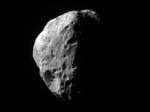 Epimetheus: A Small Moon of Saturn
Epimetheus: A Small Moon of Saturn
24.08.2005
How did Epimetheus form? No one is yet sure. To help answer that question, this small moon has recently been imaged again in great detail by the robot spacecraft Cassini now orbiting Saturn. Epimetheus sometimes orbits Saturn in front of Janus, another small satellite, but sometimes behind.
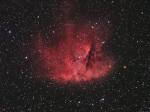 NGC 281: The Pacman Nebula
NGC 281: The Pacman Nebula
23.08.2005
NGC 281 is a busy workshop of star formation. Prominent features include a small open cluster of stars, a diffuse red-glowing emission nebula, large lanes of obscuring gas and dust, and dense knots of dust and gas in which stars may still be forming.
22.08.2005
Sometimes on Mars, there is nothing to see but red sand. Traveling two kilometers south of Endurance Crater, the robotic rover Opportunity now exploring Mars stopped and took a 360 degree panorama of a desolate and rusted Martian landscape.
 A Lenticular Cloud Over Hawaii
A Lenticular Cloud Over Hawaii
21.08.2005
Can a cloud do that? Actually, pictured above are several clouds all stacked up into one striking lenticular cloud. Normally, air moves much more horizontally than it does vertically. Sometimes, however, such as when wind comes off of a mountain or a hill, relatively strong vertical oscillations take place as the air stabilizes.
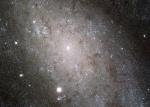 The Stars of NGC 300
The Stars of NGC 300
20.08.2005
Like grains of sand on a cosmic beach, individual stars of large spiral galaxy NGC 300 are resolved in this sharp image from the Hubble Space Telescope's Advanced Camera for Surveys (ACS). The inner region of the galaxy is pictured, spanning about 7,500 light-years.
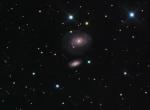 NGC 1 and NGC 2
NGC 1 and NGC 2
19.08.2005
Beautiful nebulae, clusters, and galaxies that grace planet Earth's night sky are often known by their New General Catalog designation or NGC number. That classic listing was compiled by John Louis Emil Dreyer, remarkable director of the Armagh Observatory from 1882 to 1916.
|
January February March April May June July August September October November December |
|||||||||||||||||||||||||||||||||||||||||||||||||